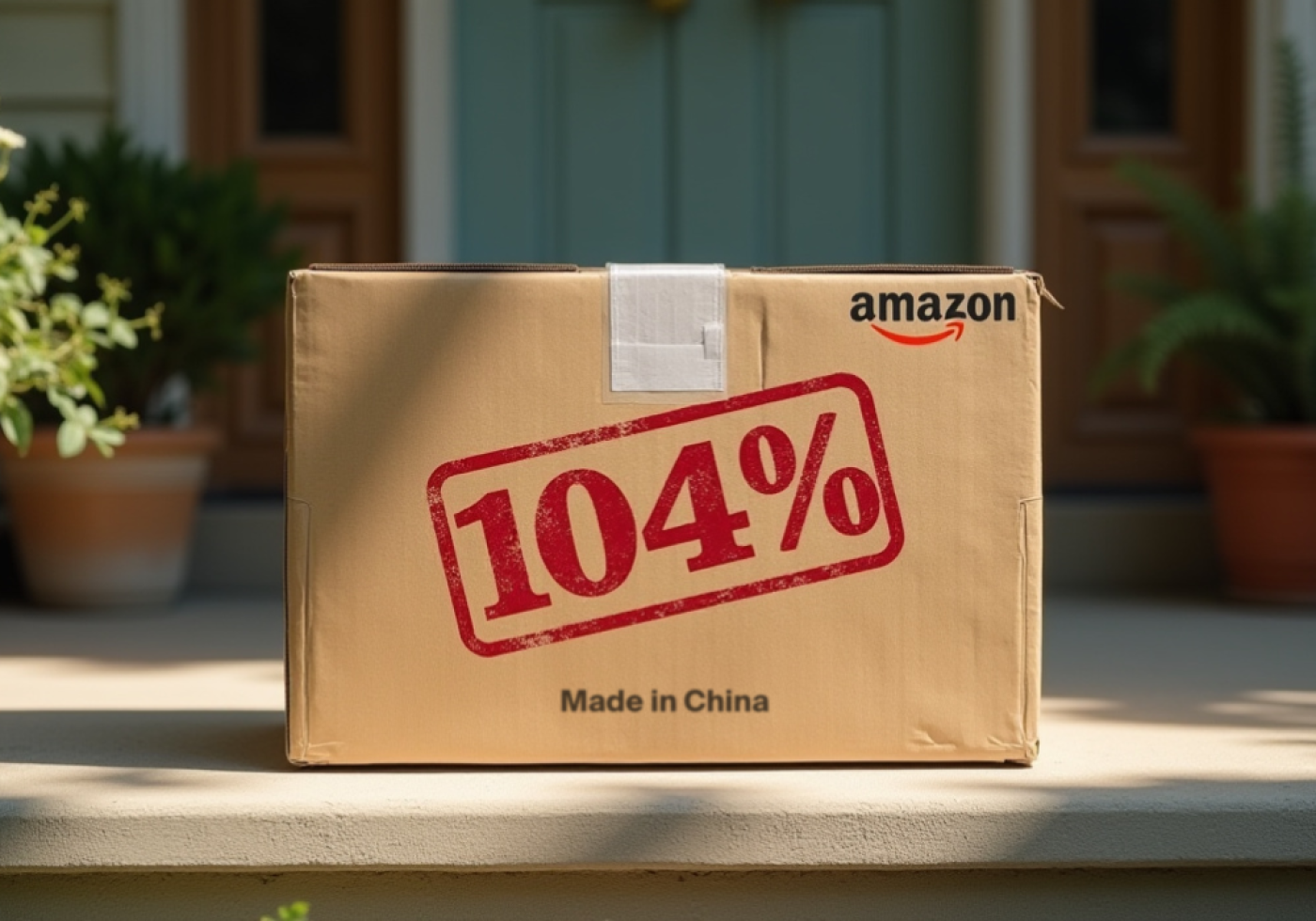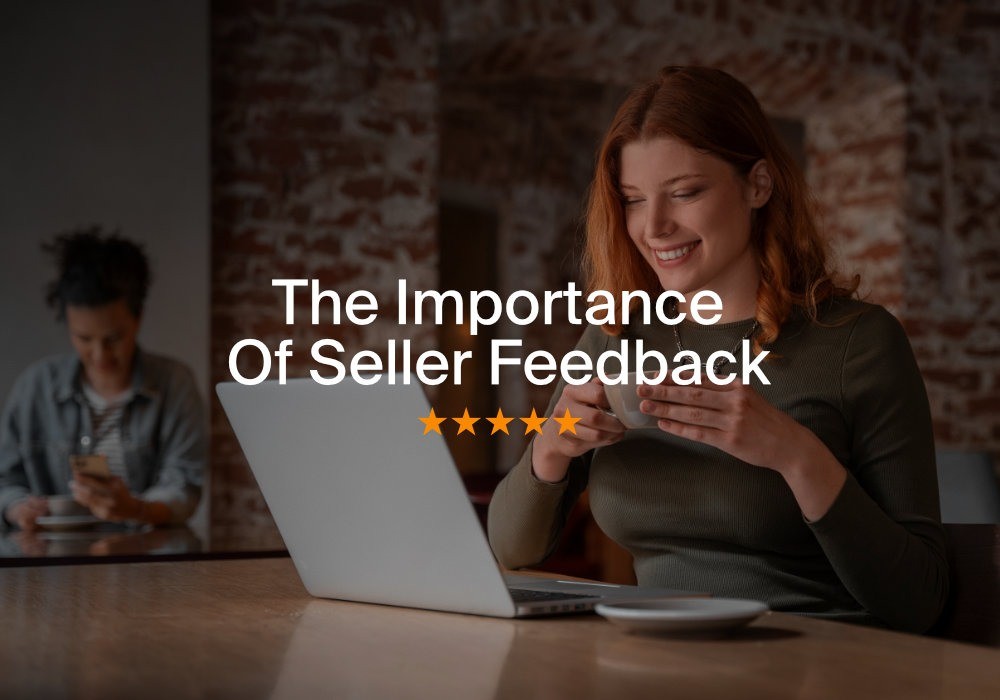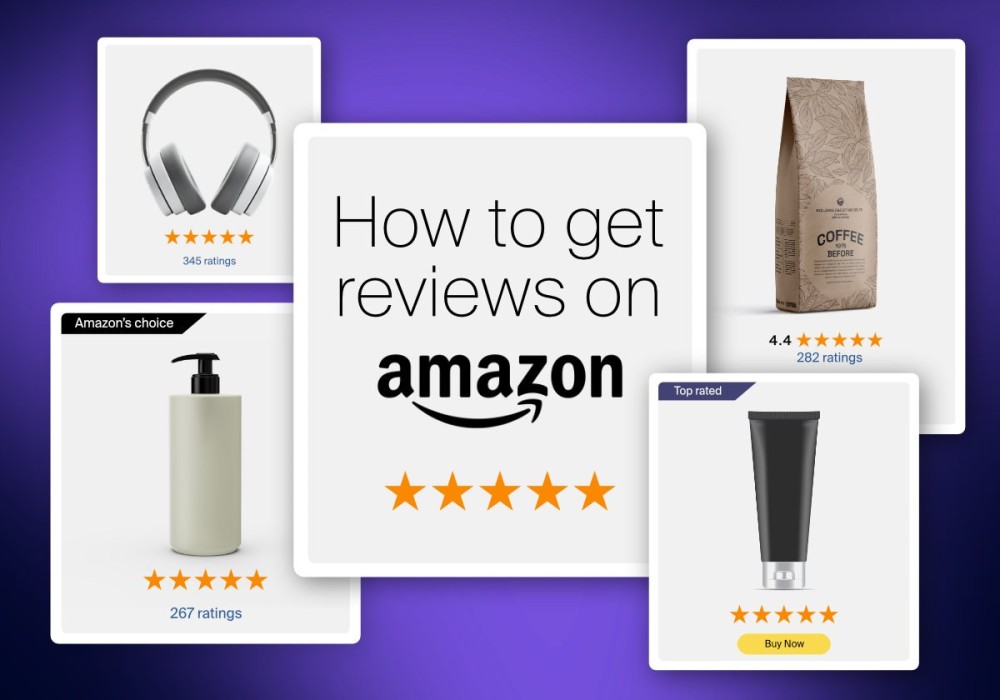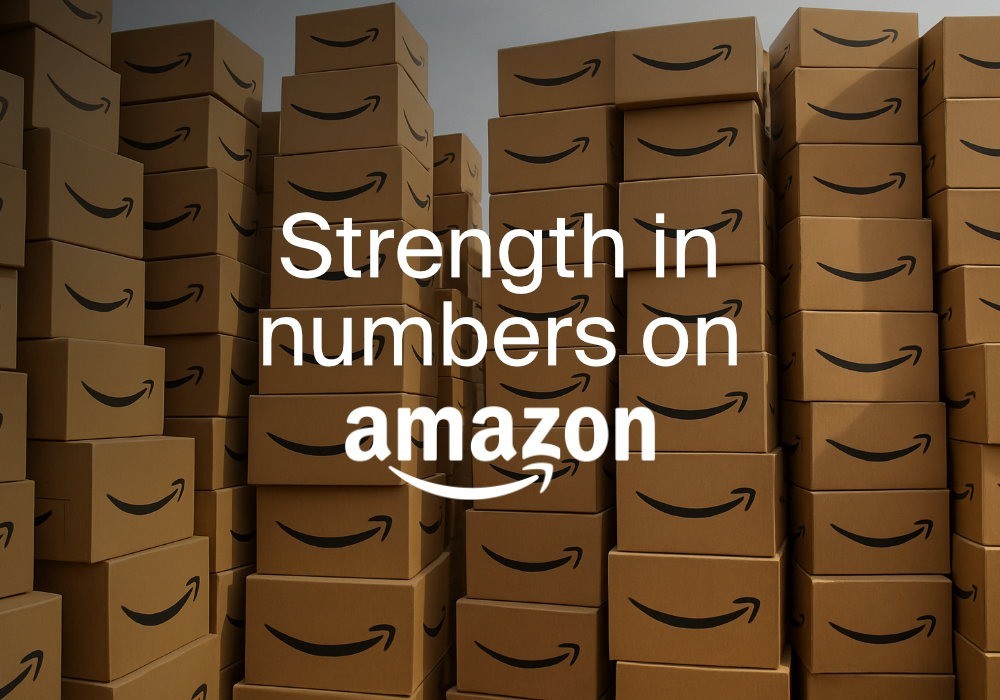On April 8, 2025, President Trump escalated the U.S.-China trade war with a dramatic new move: a 50% tariff hike on Chinese goods, bringing the total import duty on many Chinese products to an unprecedented 104%.
This follows China’s earlier announcement of retaliatory tariffs on U.S. goods, setting off a high-stakes trade standoff with no grace period and immediate enforcement. For U.S.-based Amazon sellers who rely heavily on Chinese manufacturing, the implications are severe. But there are also actions sellers can take to survive—and even stand out—during this volatile period.
This article breaks down the announcement, explains its impact on Amazon sellers, and outlines strategic steps—including building buyer trust with Amazon-compliant review automation—to stay competitive despite rising costs.
What Was Announced: The 104% Tariff Explained
The White House confirmed the new 104% tariff rate during a press briefing on April 8. This was a direct reaction to China's refusal to back down from its own 34% retaliatory duties. The tariff is now in full effect, applying to any Chinese imports arriving after the April 9 deadline.
Key facts for Amazon sellers:
- No grace period: The announcement gave only hours of notice before enforcement began.
- Full 104% rate: A combination of the original tariffs (54%) and the newly announced 50%.
- Applies to all imports from China: Including electronics, home goods, apparel, auto parts, toys, and accessories.
For sellers with Chinese suppliers, this is not a hypothetical threat—it’s a massive real-time cost surge.
Why This Tariff Hits Amazon Sellers Hard
Most Amazon sellers—particularly private label businesses—source from China due to its scale, efficiency, and pricing. The 104% tariff instantly doubles the landed cost of goods. That means:
- A product that cost $10 to import may now cost $20 or more.
- Sellers must either raise prices (and risk losing the Buy Box) or absorb the cost (and risk profitability).
- Thin-margin categories like home goods and fashion are especially vulnerable.
Worse still, unlike the 2018–19 tariff rounds, there’s no phase-in. Sellers were caught off guard and many are now scrambling to delay shipments, renegotiate with suppliers, or rethink their sourcing altogether.
Action Plan: How U.S. Sellers Can Stay Competitive
1. Strengthen Supply Chain Strategy
Now more than ever, sellers must rethink where and how they source. A 104% tariff means Chinese manufacturing may no longer be viable for some product lines.
Options include:
- Diversify Suppliers
Shift to other regions with lower or no tariffs. Consider India, Mexico, or Eastern Europe. Nearshoring can cut both duties and shipping delays. - Negotiate With Existing Manufacturers
Request discounts to share the burden of new tariffs. Some suppliers may offer partial rebates or flexible payment terms to keep your business. - Simplify Your Product
Strip out high-cost components or accessories. Even minor packaging changes can reduce duties or shift HTS codes to lower-bracket items.
2. Cut Operational and Marketing Costs
If margins are squeezed, operational efficiency becomes critical. Every pound saved is margin recovered.
Cost-saving strategies:
- Refine PPC Spend
Audit your campaigns to reduce waste and lower ACoS. Focus on converting, long-tail keywords. Pause campaigns for unprofitable SKUs. - Lean Into Organic Social Media
Use free platforms like Instagram and TikTok to showcase products with minimal budget. Share customer testimonials, behind-the-scenes content, and product usage tips. Tools that help you auto-schedule product shares across platforms can save time and reduce ad spend. - Consolidate Shipments
Switch to sea freight, consolidate FCL (full container loads), and minimise air freight unless necessary. Ask your freight forwarder for options. - Streamline Packaging and Prep
Simplify how products are prepared for FBA. Reduce packaging materials and dimensions where possible to lower prep costs and dimensional weight fees.
3. Focus on Winning Trust, Not Just Price
Customers will soon be paying more across all retailers. Your job is to make sure you are the brand they trust.
How to do it:
- Build up detailed, verified product reviews
- Deliver on time (use FBA or reliable 3PLs)
- Respond quickly to seller feedback and support messages
- Create a product experience that feels professional and helpful
- Use post-purchase content (like guides, FAQs, and warranty info) to reinforce satisfaction
4. If You’re a First-Time Amazon Seller
This environment is tougher—but also full of opportunity. Many weaker or riskier sellers will exit the market under pressure, leaving room for focused, policy-abiding sellers to thrive.
Tips for new sellers:
- Start Small But Smart: Focus on one or two SKUs with high demand and low risk.
- Follow All Amazon Policies: Avoid any shortcuts for reviews or rankings—these get riskier under increased platform scrutiny.
- Use Review Automation Early: Set up review automation from day one to start building trust.
- Build a Brand, Not Just a Product: Think long term—logos, packaging, social media, and a good customer experience all matter.
- Prepare for Higher Capital Needs: Tariffs raise your upfront investment. Budget accordingly and source products strategically.
5. Differentiate Through Review Credibility
In a higher-cost landscape, trust becomes the most valuable currency. As prices rise, consumers will become more cautious and selective. Strong, credible reviews will be the single most powerful conversion tool.
Key actions:
- Automate Your Reviews the Right Way
Use Amazon-compliant review request tools like Amzigo’s Automated Review Centre, which works with the official “Request a Review” API. This ensures you stay within policy while building product and seller credibility. - Avoid Tools That Allow Custom Solicitation
Some review platforms let sellers send custom messages or incentivised requests—which violates Amazon’s rules. These could trigger account suspensions or listing suppression. In a tight market, the last thing you need is compliance issues. - Maximise Seller Feedback
With pricing set to fluctuate, seller ratings will help you win the Buy Box. Automated systems that request both product reviews and seller feedback after each order are essential. - Provide Product Instructions & Warranty Info
These value-add emails are permitted by Amazon and help reduce negative reviews while improving buyer satisfaction. Use them to improve engagement without violating policy.
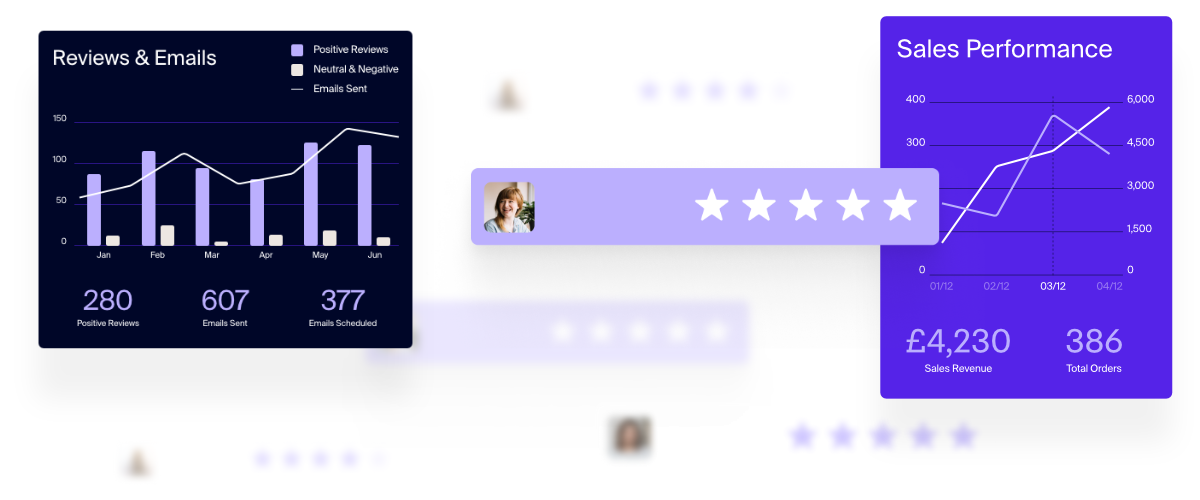
What the 104% Tariff Means for Sellers
This isn’t a hypothetical threat. The tariff is real, effective immediately, and sharply penalizes thousands of consumer goods, including electronics, apparel, home goods, auto parts, tools, and toys—categories heavily represented by Amazon sellers.
Key impacts include:
- Overnight increases in landed costs
If you paid $10 to import a unit, you might now pay over $20. That changes everything—profit margins, retail prices, restocking plans, even FBA fees relative to item value. - Tighter cash flow and inventory strain
Sellers now need significantly more capital to maintain inventory levels. This affects reorders, launch schedules, and lead times—especially for small businesses. - Market turbulence and pricing volatility
Pricing competition will shift rapidly. Sellers with pre-tariff inventory may dominate short-term sales, but restocking will force everyone into higher price brackets or slimmer margin
Conclusion
Trump’s 104% tariff on Chinese imports is the most aggressive trade action in modern U.S. history—and it’s already reshaping the e-commerce landscape. For Amazon sellers, this is a defining moment: adapt quickly, or risk being priced out.
Yet, amidst the challenges lies opportunity. Customers still need products. They still trust reviews. They still want value.
By acting fast—optimising your supply chain, controlling costs, and building review credibility—you can not only survive this trade storm, but come out stronger.
As prices rise and competitors stumble, Amazon sellers who stay compliant, strategic, and connected to their customers will stand out.
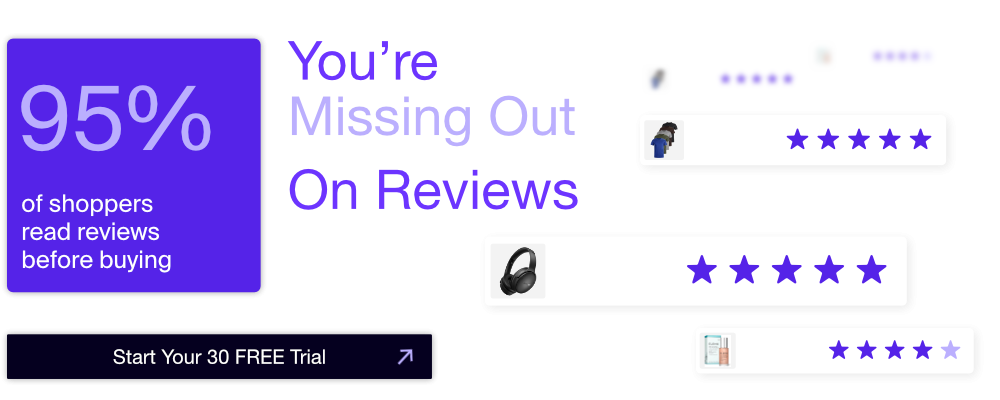
Looking to take your Amazon business to the next level?
Discover how Amzigo's advanced features, like our Automated Review Centre, Product Analysis, and Inventory Management, can transform your selling experience. Check out our features and try it for free!
